Serbia’s second-largest city officially became the European Capital of Culture on January 13th this year after a yearlong delay due to the Covid-19 pandemic. This designation highlights the city as a cultural hotspot in Serbia, and hope is that it will bring an influx of tourists to the area. There has never been a better time to visit Novi Sad!
My first visit to the city was in October last year, after a two-week archaeological project further north in Serbia. Before leaving the country, I settled in Novi Sad for three days to explore the city and go hiking in the nearby Fruška Gora National Park. I returned to the city twice this March during another two weeks at the archaeological project, so I feel like I know the city pretty well by now.
Last year, when I first arrived in the city, I felt strange being alone all of a sudden after two weeks of constantly being around other people, and it left me feeling rather empty. Yes, I was feeling sad in Novi Sad. But the city itself isn’t sad, despite what it’s name might imply (ok, “sad” in Serbian actually means “plantation”!). A walk into the city centre that same night proved this to me. While Novi Sad is not one of the prettiest cities I’ve seen, it has a good share of beautiful and interesting sights to see, and – on top of that – a wonderful view from a historic fortress. It’s definitely worth spending a night or two in!
Below are thirteen places that I really enjoyed exploring while in Novi Sad!
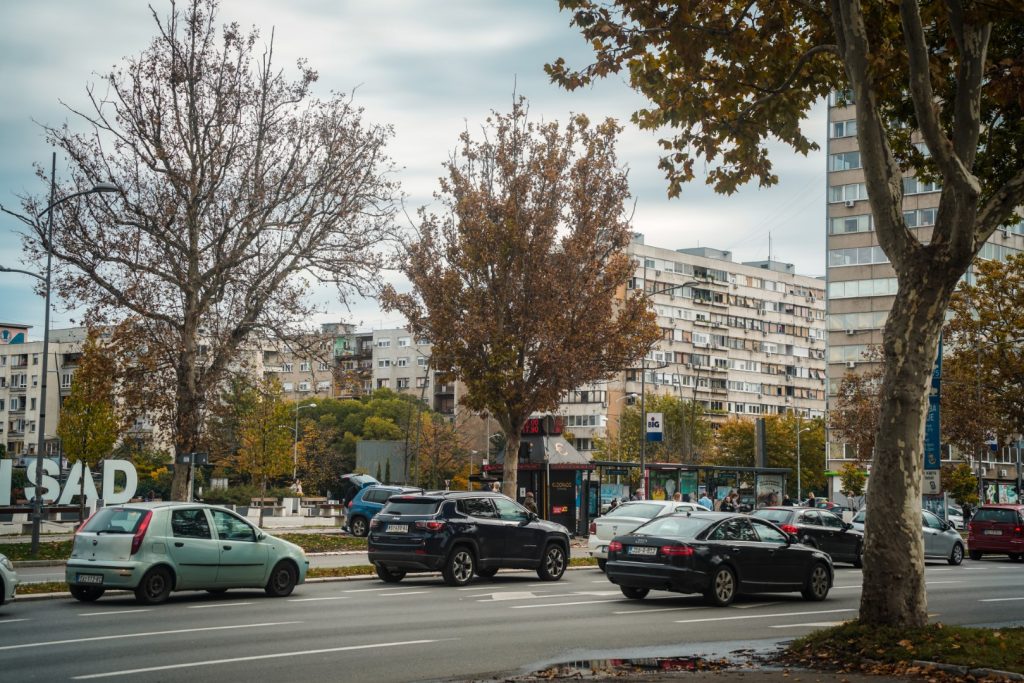
1. Trg Slobode, the main square and heart of the city
Trg Slobode – or “the Liberty Square” is the heart of Novi Sad. The square was founded in the 18th century shortly after the city itself was founded. There used to be a market on the square before it was moved to establish a central walking zone. Today, the square is dominated by the Monument to Svetozara Miletić, the work of the famous sculptor Ivan Meštrović from 1939. It also houses some of the most important buildings in Novi Sad, such as the neo-renaissance City Hall from 1895 and the Church of the Name of Mary which was reflecting itself in puddles left behind by previous rain showers.
As well as being an obvious meeting point, the square is also the centre for shopping in Novi Sad, extending down the bustling shopping street of Zmaj Jovina. This is the go-to place for buying anything from clothes to souvenirs, and for taking a break at one of its many cozy cafés. Take your time strolling through the lively street and absorb Novi Sad’s atmosphere.

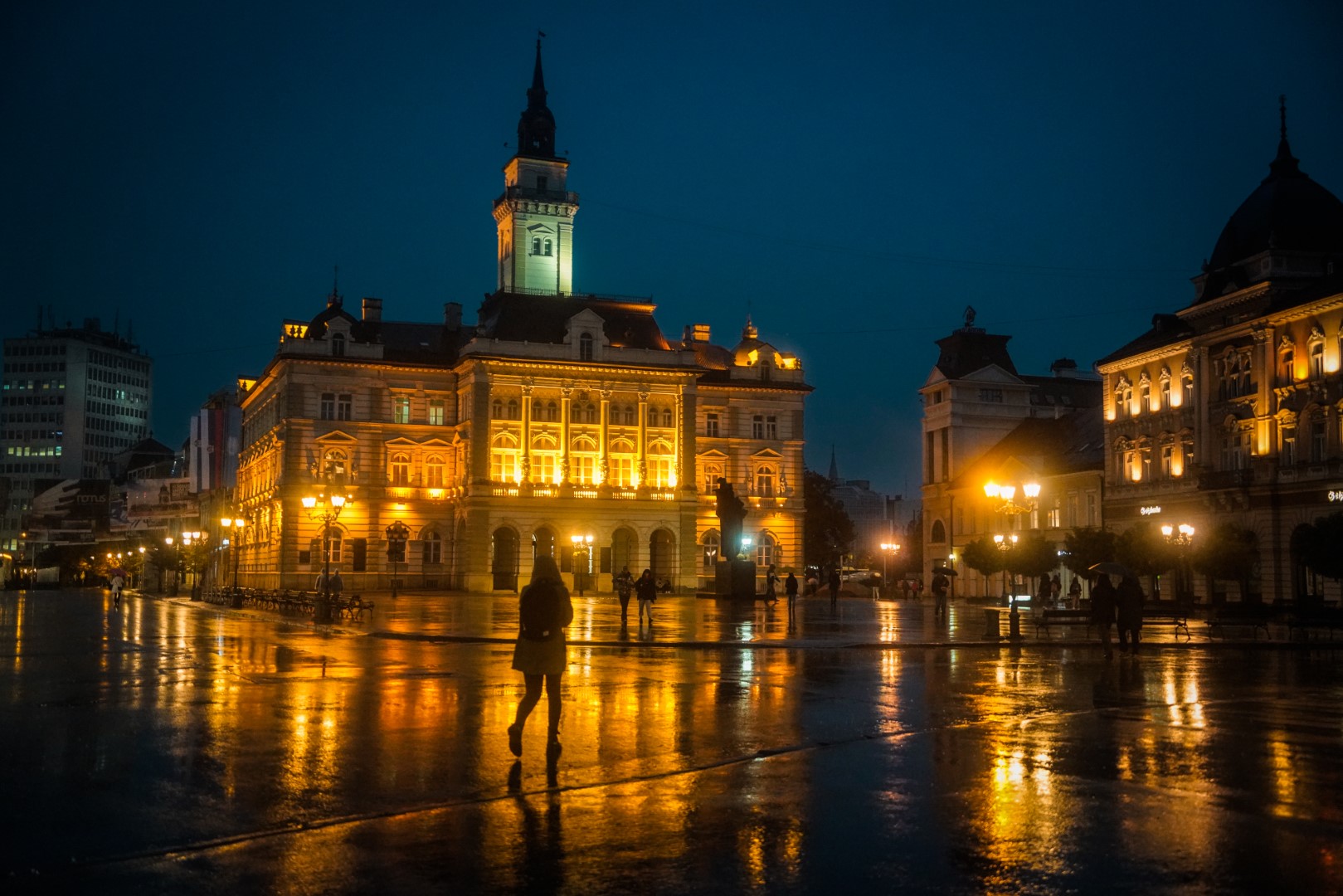
2. The Parish Church of the Name of Mary
Often referred to as “the Cathedral”, Novi Sad’s largest church is located on the main square and is one of the main draws of the city. This Roman Catholic parish church was built between 1892 and 1894 on the site of a church from 1719 which was destroyed during the Hungarian Revolution of 1848. The three-nave building is equipped with neo-gothic arches, stained glass windows, a mechanical pipe organ and four altars, the main one of which was made of carved wood imported from Tyrol.
Don’t forget to look up as you explore the exterior of the church – the colourful tiles on the roof are beautiful, especially when reflecting in the sun!


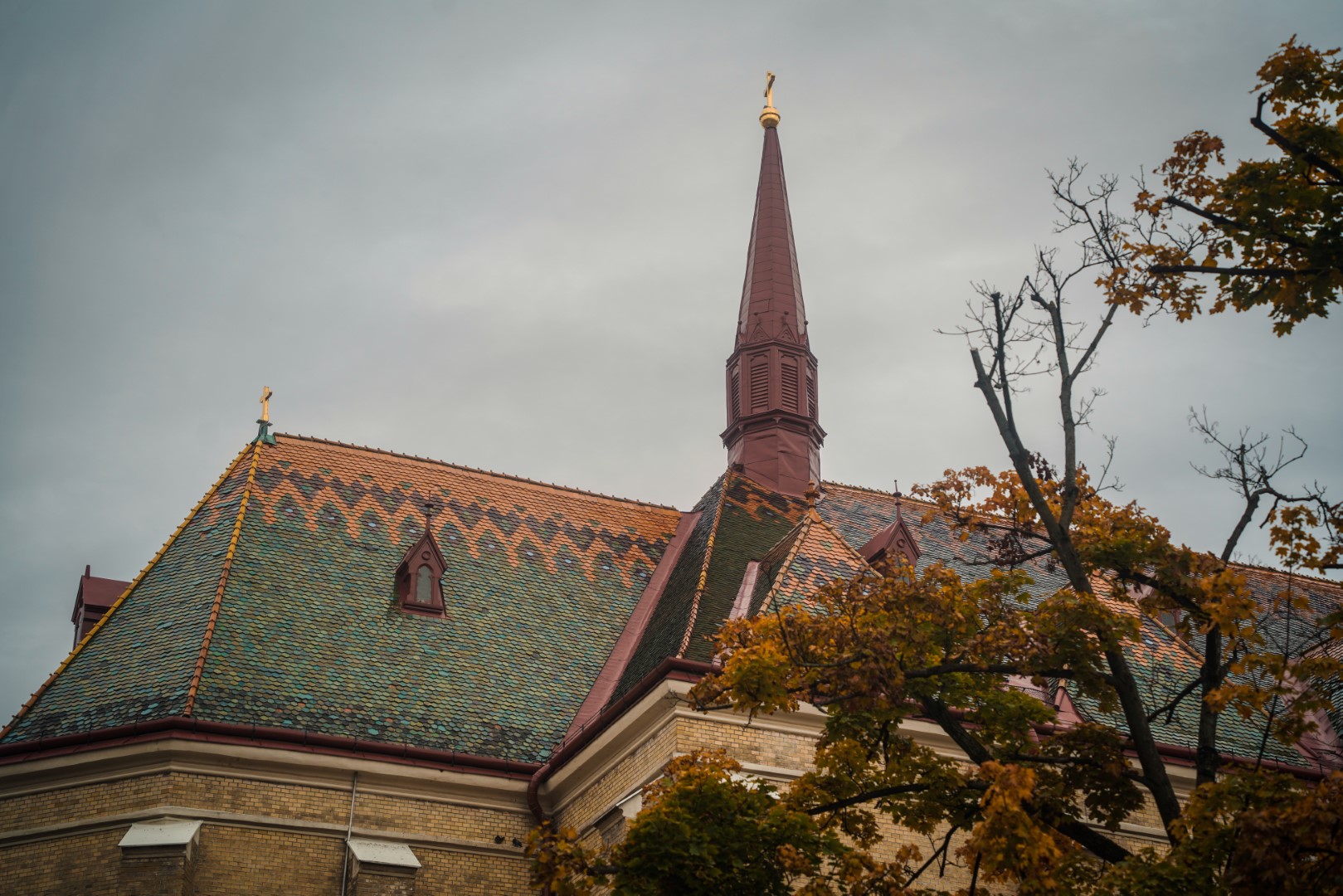
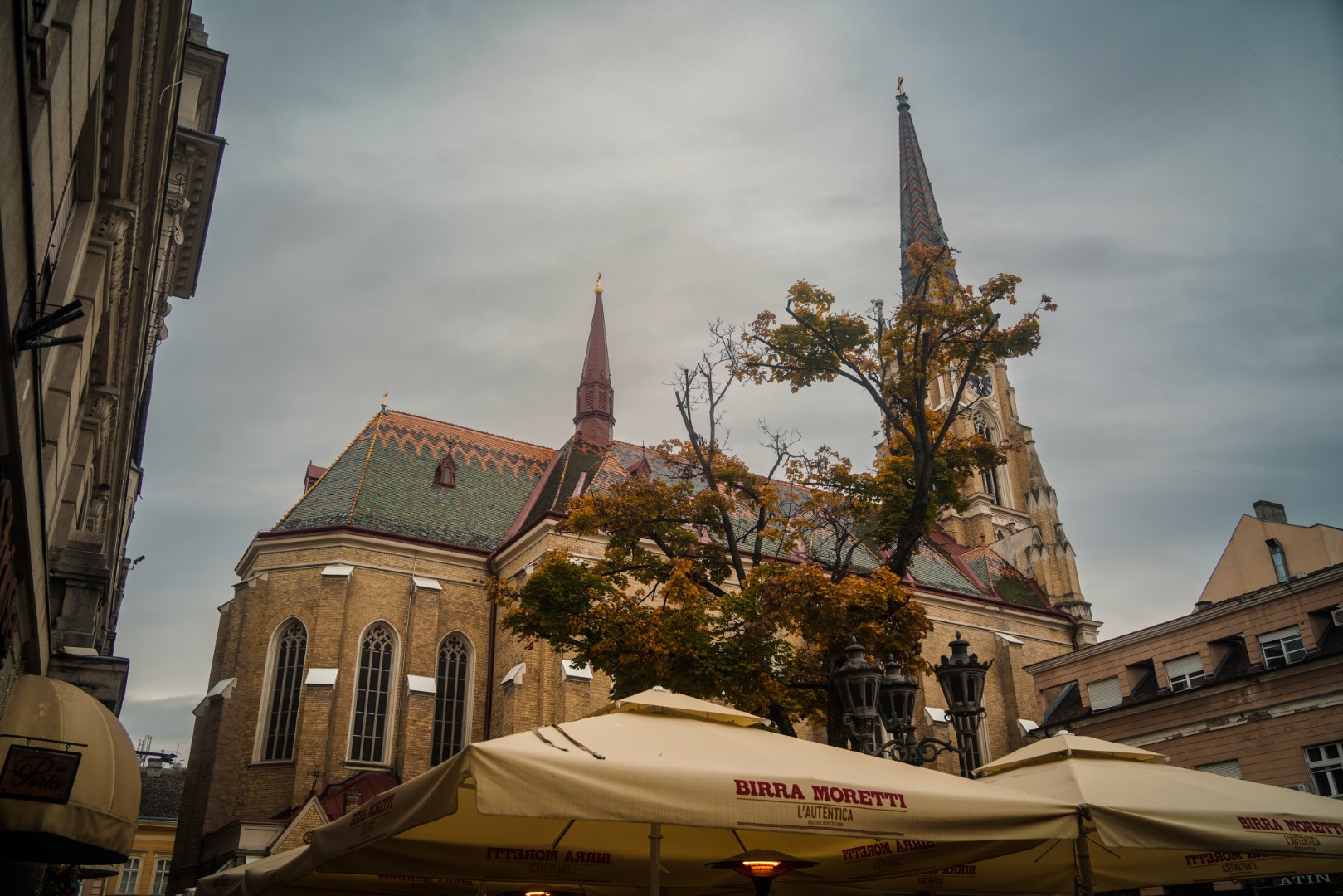
3. Saint George’s Cathedral
Northeast of the parish church stands the city’s orthodox church, a more modest structure with a dimly-lit interior.
The church was built between 1860 and 1905 on the ruins of a church from 1734, after which it became the seat of the Serbian Orthodox Eparchy of Bačka. The interior is furnished with an iconostatis with 33 icons and two large throne icons which are considered to be the best ecclesiastical works of the famous artist Paja Jovanović.
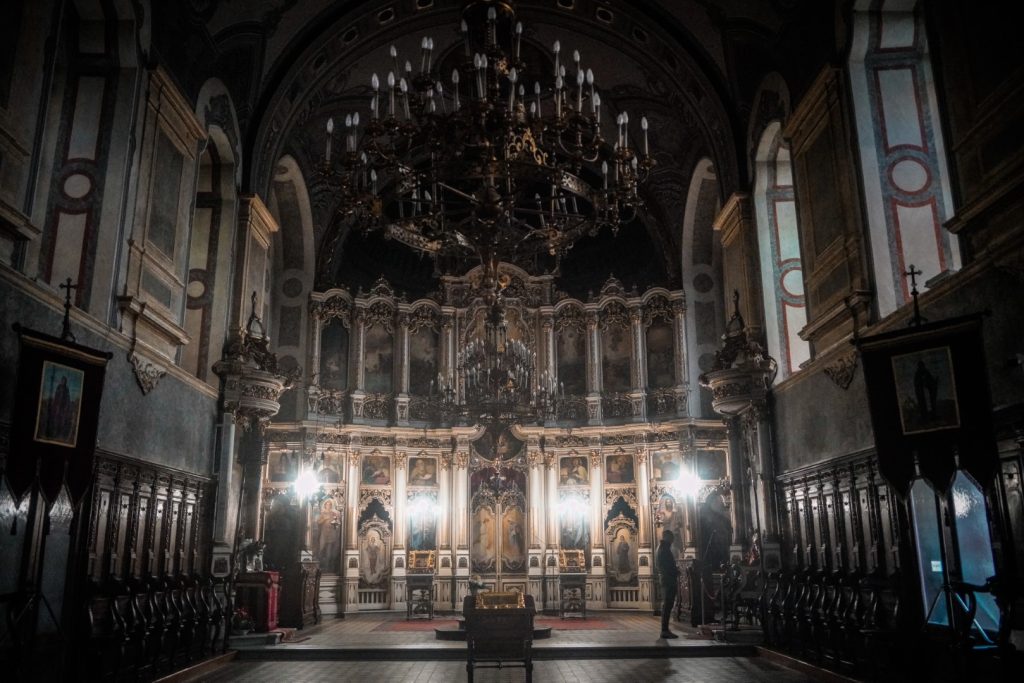
4. Bishop’s Palace
Located next to the orthodox church is the Bishop’s Palace from 1901. The palace was designed by the famous architect Vladimir Nikolic in a combination of several different architectural styles. Elements of Byzantine, medieval Serbian, Eastern and Russian origin make up the decorations of this architectural masterpiece.
If you’re lucky, you might even stumble upon a group of performing dancers in traditional Serbian dress outside the palace like I did!

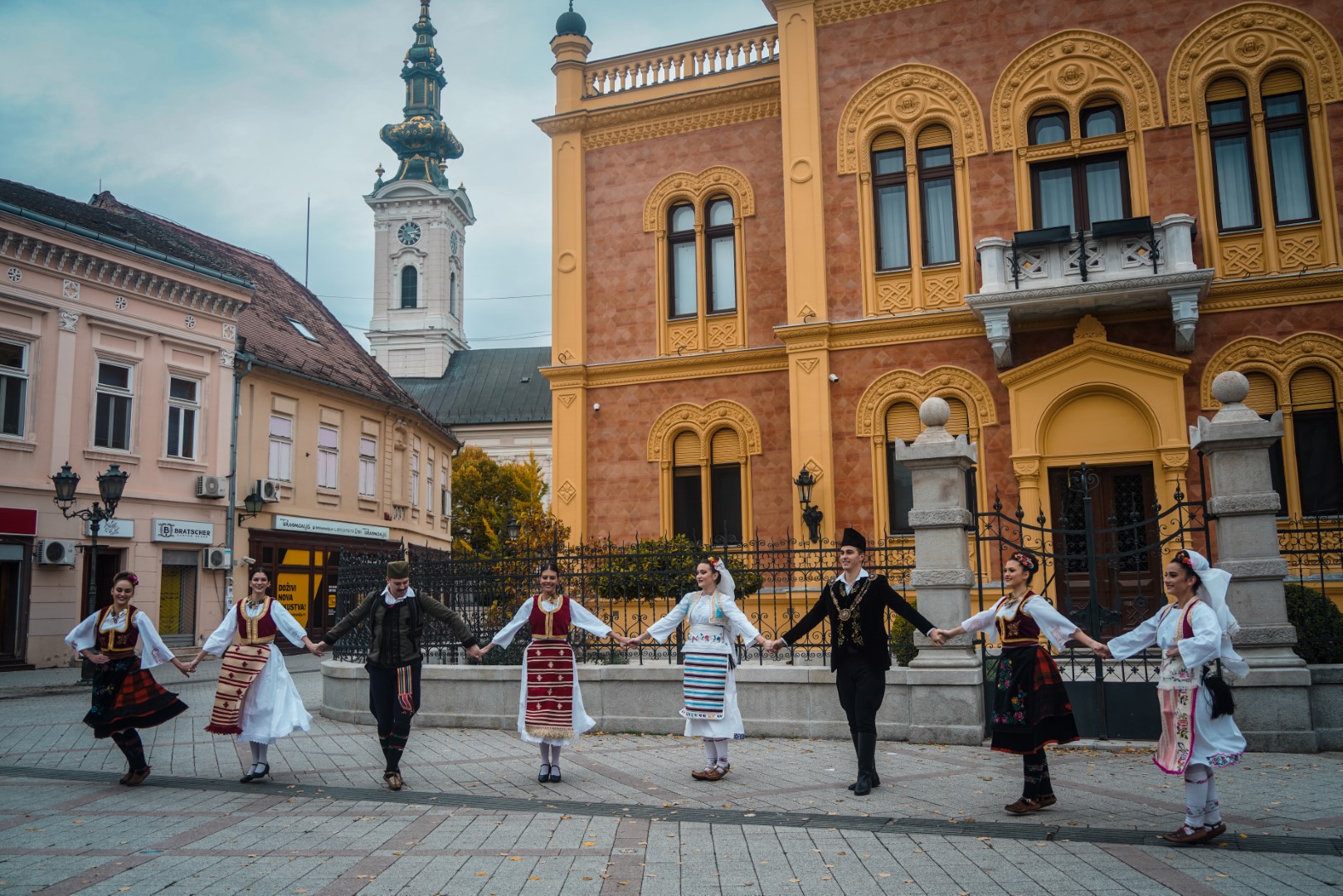
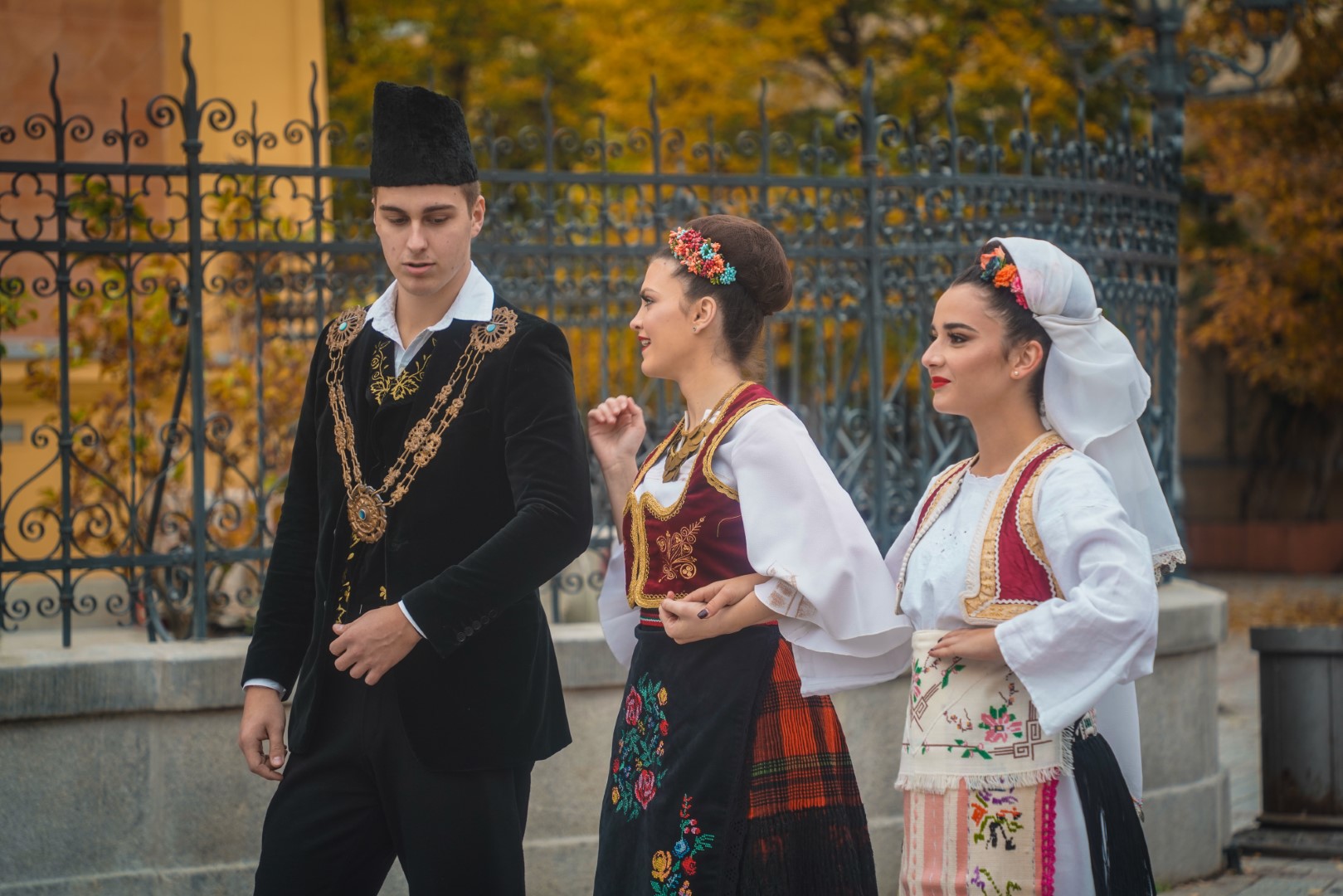
5. View of Petrovaradin Fortress
Novi Sad’s perhaps most famous sight is the Petrovaradin Fortress, located on the opposite side of the Danube from the city centre.
Before making your way over the Varadin Bridge to explore the fortress – which is an absolute must – head down to the Danube on the west bank to see the fortress rise above Europe’s second-longest river.
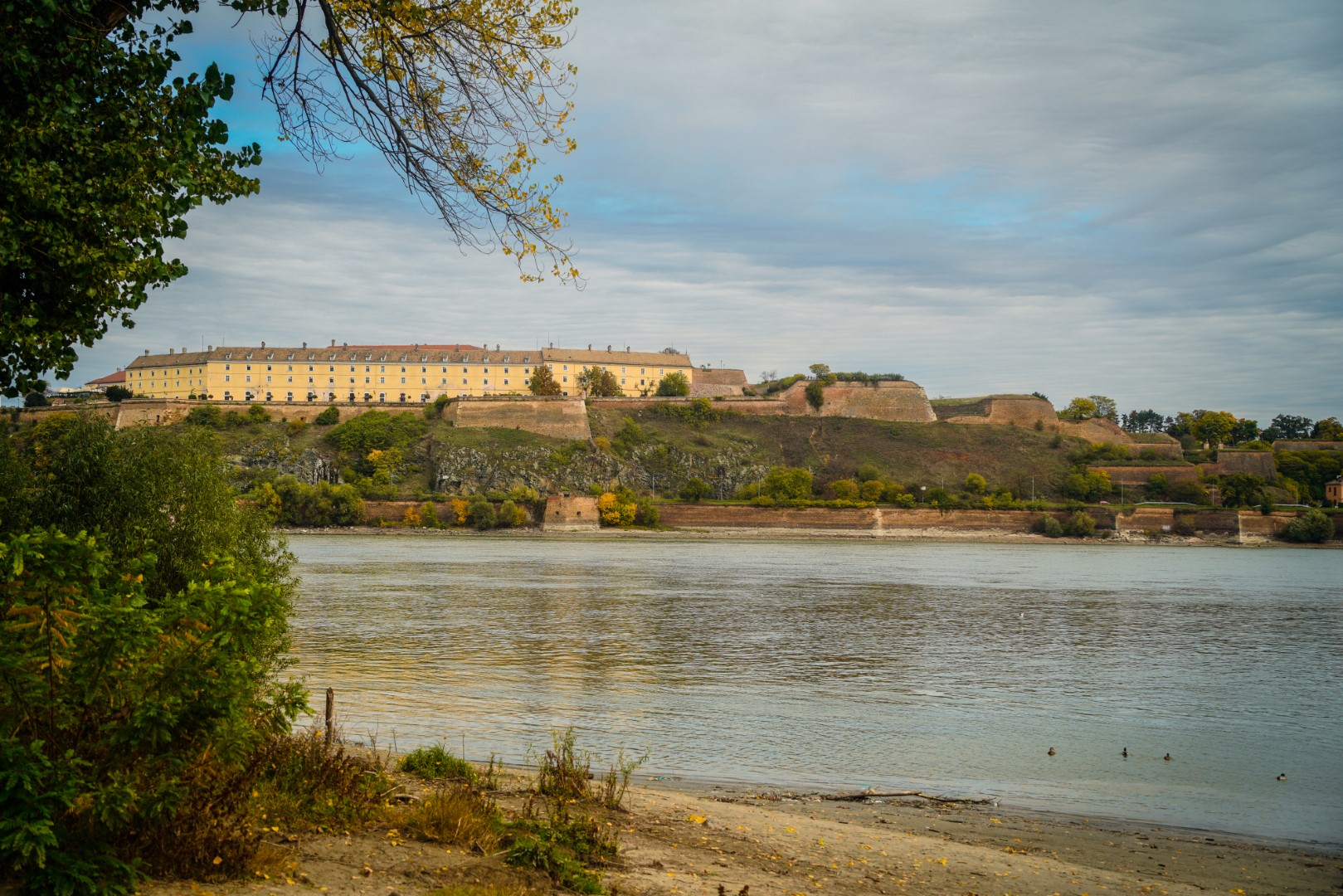
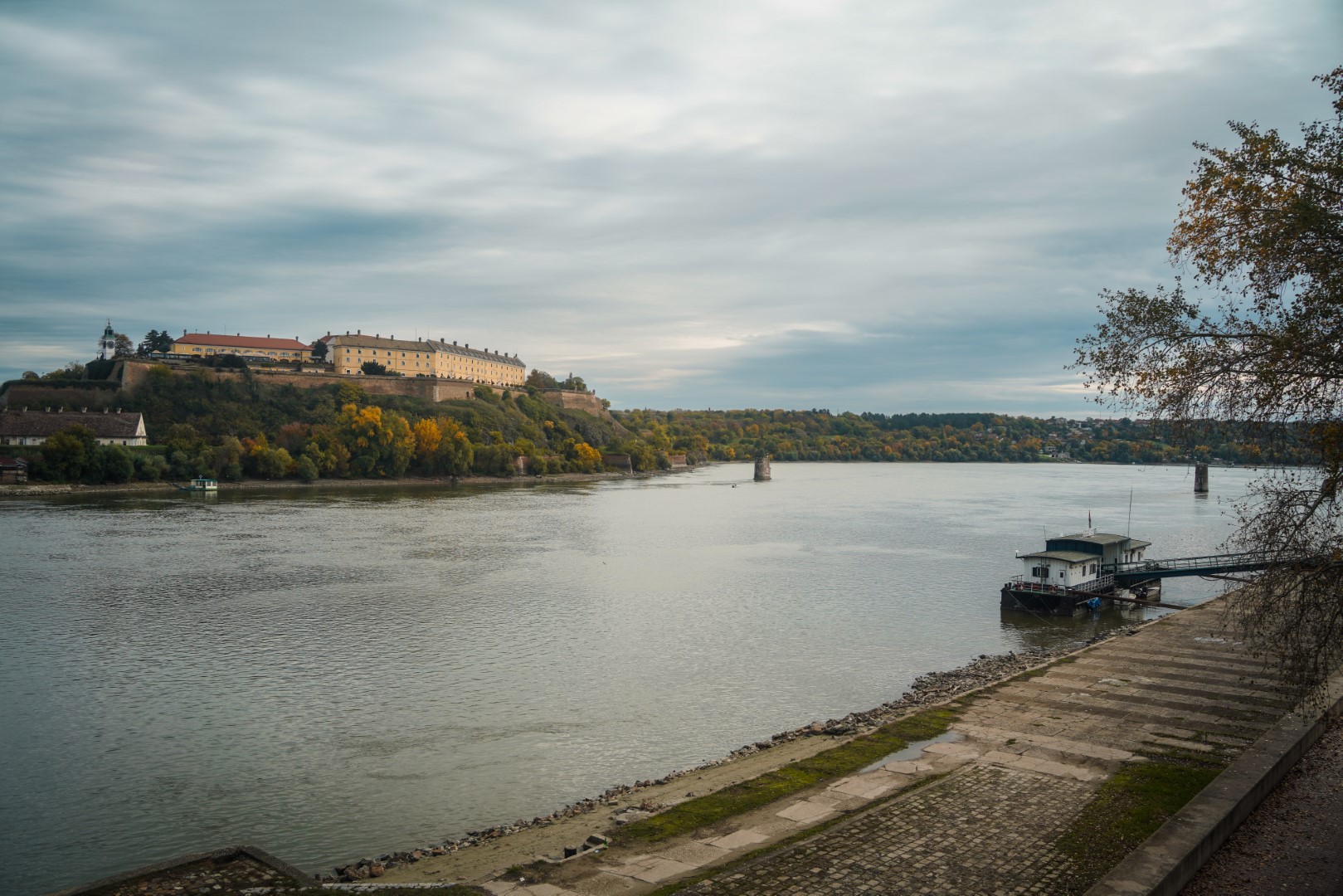
6. Petrovaradin Fortress and the best views of Novi Sad
Make your way over the Varadin Bridge for more scenic views, and spend some time exploring Petrovaradin Fortress.
The construction of the fortress began in 1692, and was completed 88 years later in 1780. However, archaeological surveys have shown that the area was inhabited during the Paleolithic (ca. 19.000-15.000 BC), and finds from later periods show that it was inhabited more or less continuously since then and up to today. Many different types of fortresses have been present at the site since the early Bronze Age (ca. 3000 BC)!
Today, the site is most known for holding the infamous EXIT Festival every July, one of the biggest festivals in Europe! It also houses the Museum of Novi Sad, and if you’re up for a bit of a different experience, you can visit the tunnels beneath the fortress that stretch for no less than 16 kilometres! Another interesting sight is the clock tower which was constructed so that fishermen on the Danube could see the time from a faraway distance. It has an unusual quirk; the minute and hour hands are reversed!
But the best thing about the fortress is not the fortress itself; it’s the beautiful city views found at just about every angle!
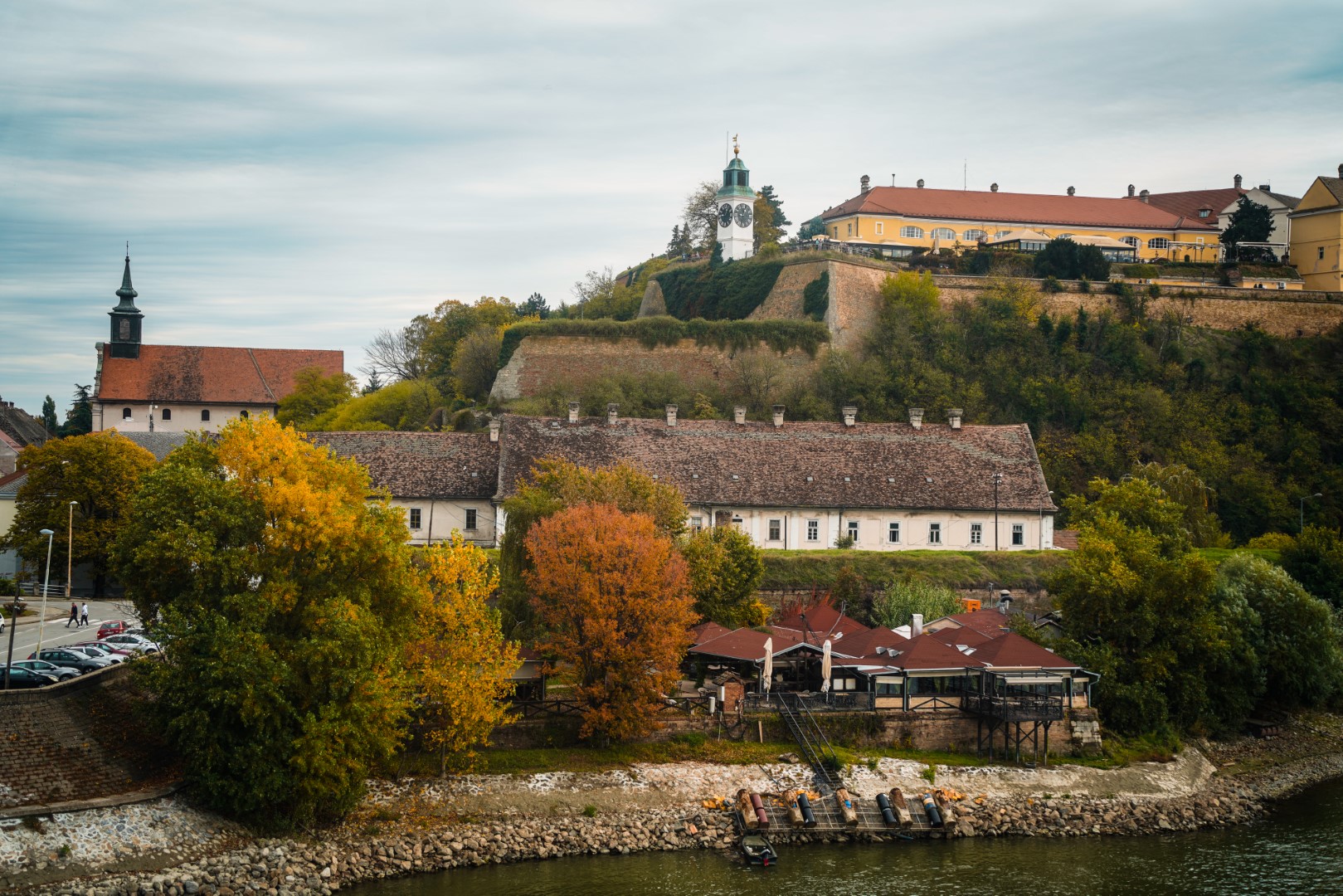
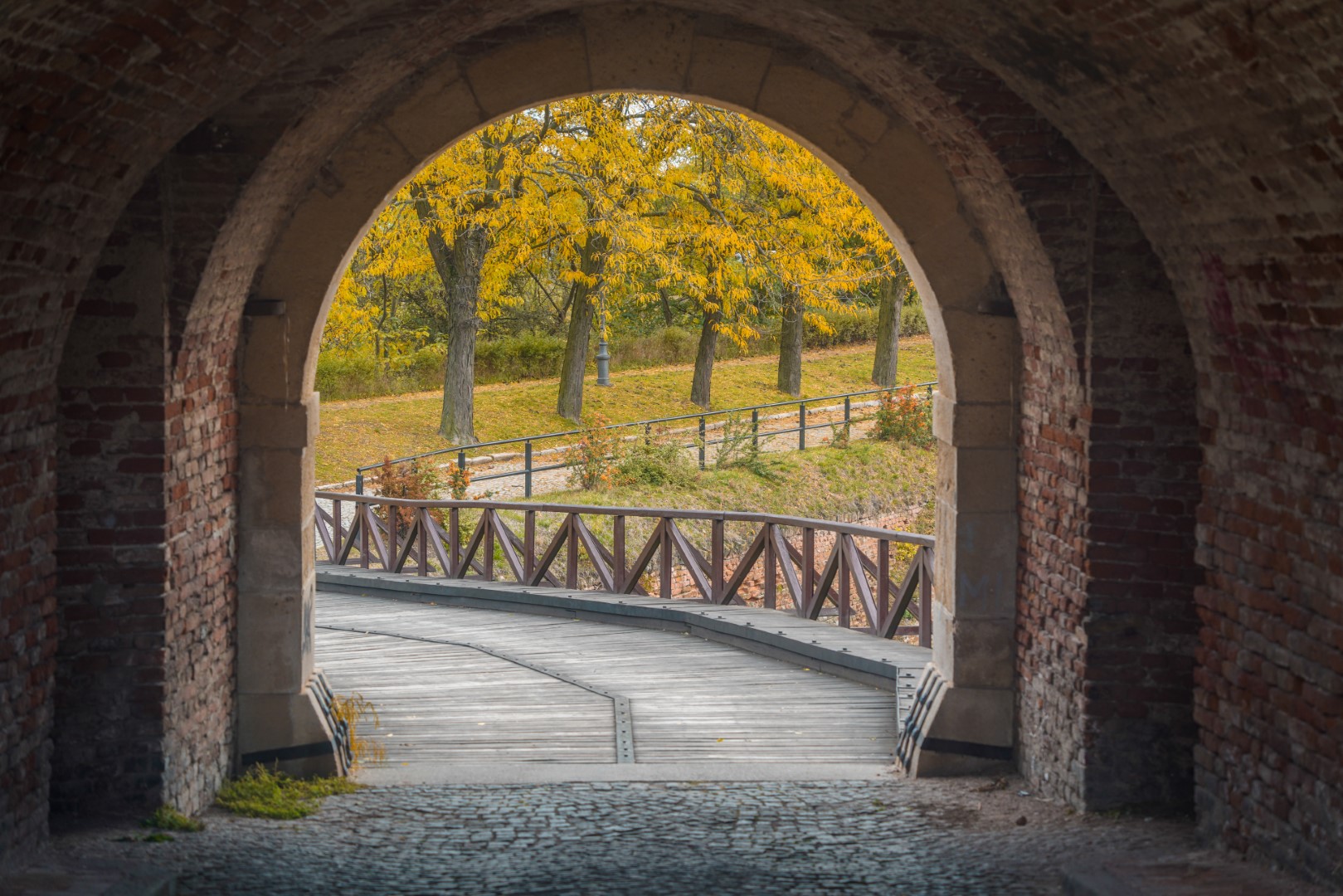




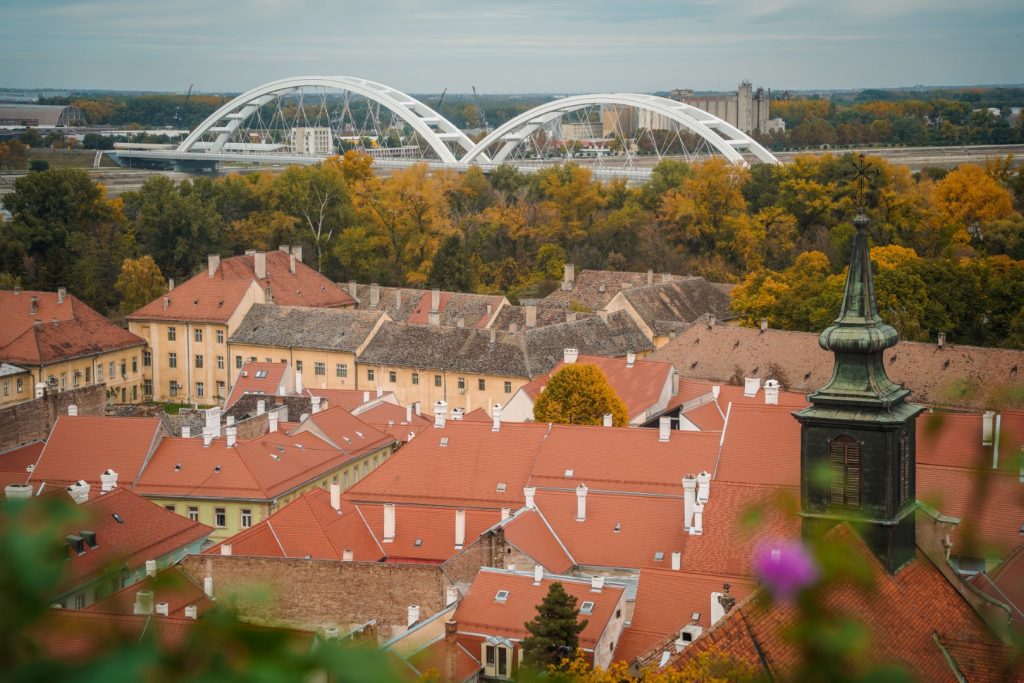
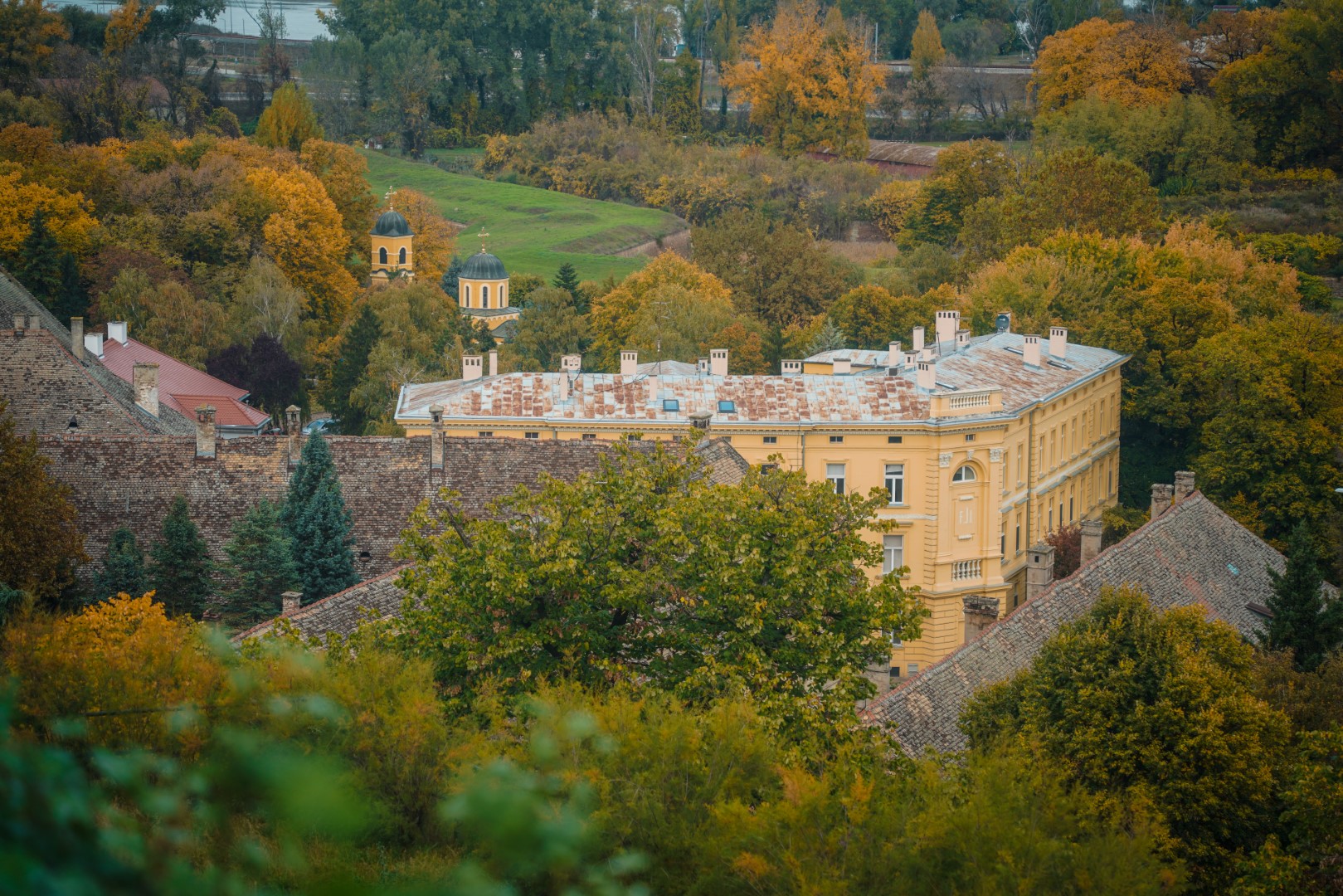


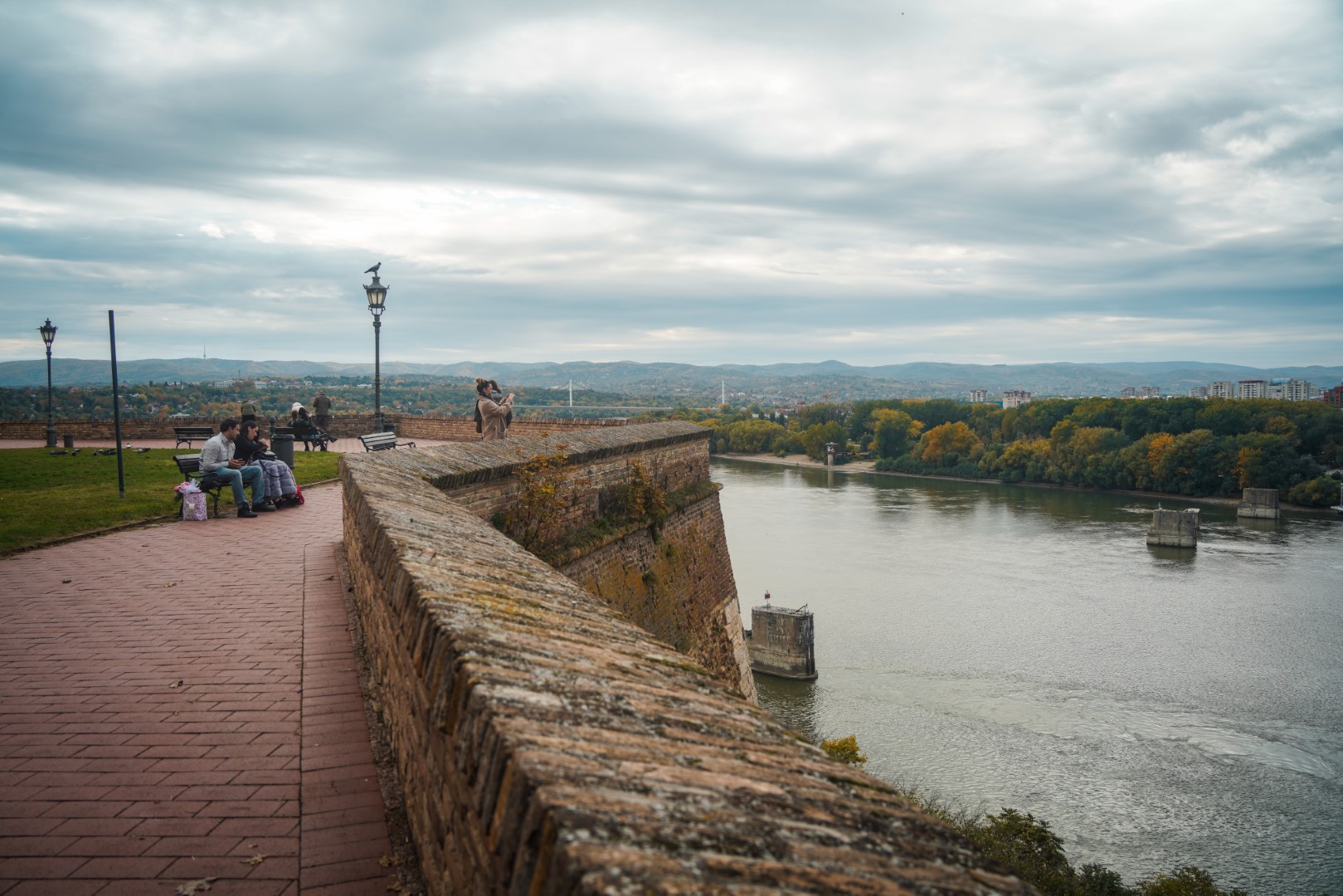


7. The pretty Petrovaradin neighbourhood
Before heading back to the city centre, don’t cheat yourself of the chance to explore Novi Sad’s prettiest neighbourhood. Nestled beneath the fortress hill is the Petrovaradin neighbourhood.
With its pastel-coloured townhouses and cozy leafy streets, it’s well worth a long stroll. You’ll also get wonderful views of the neighbourhood as you make your way up to the fortress.
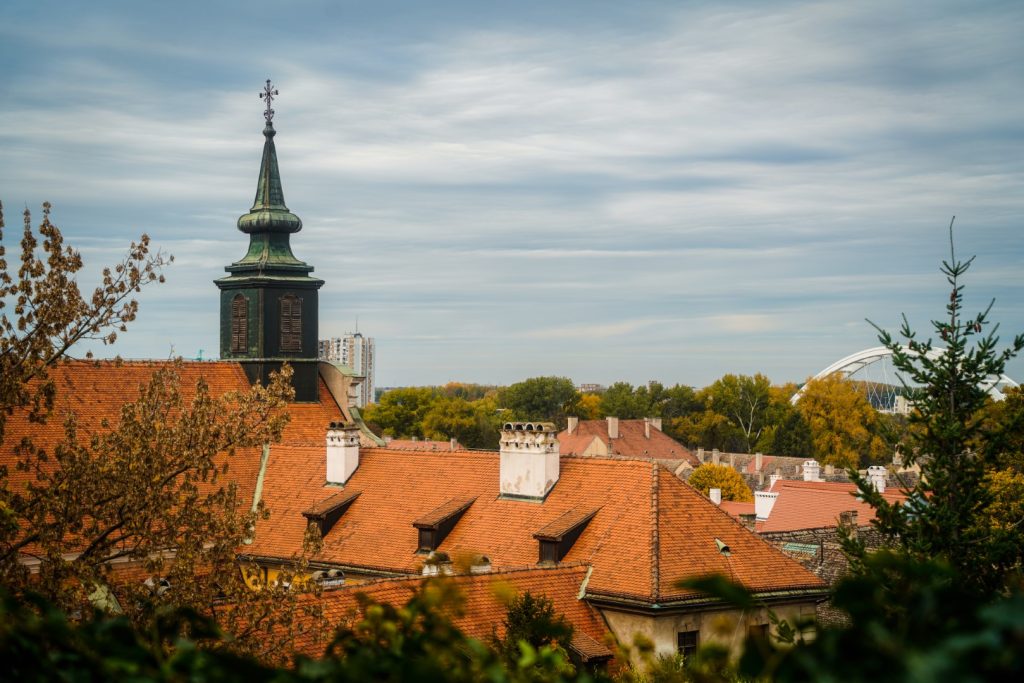
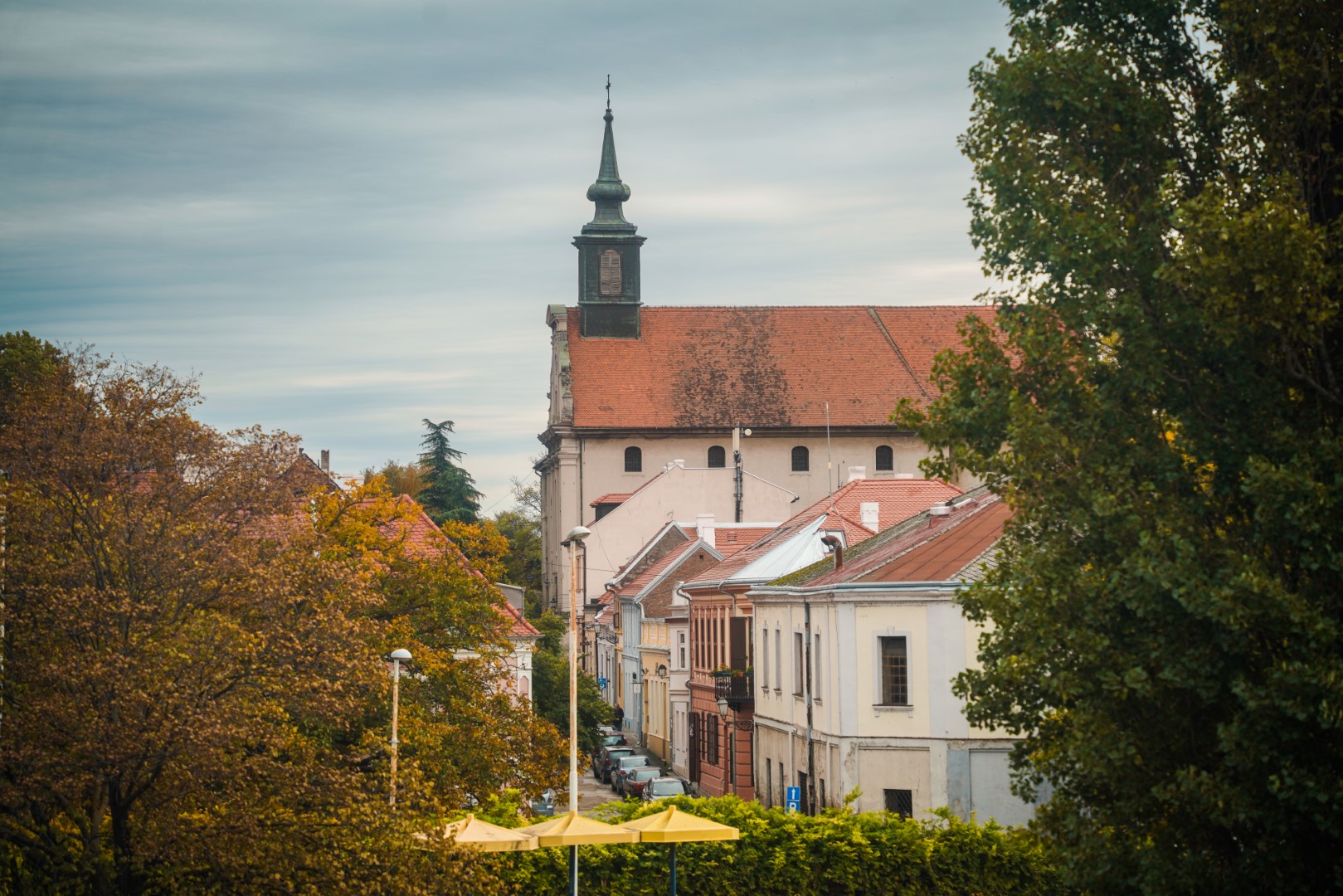

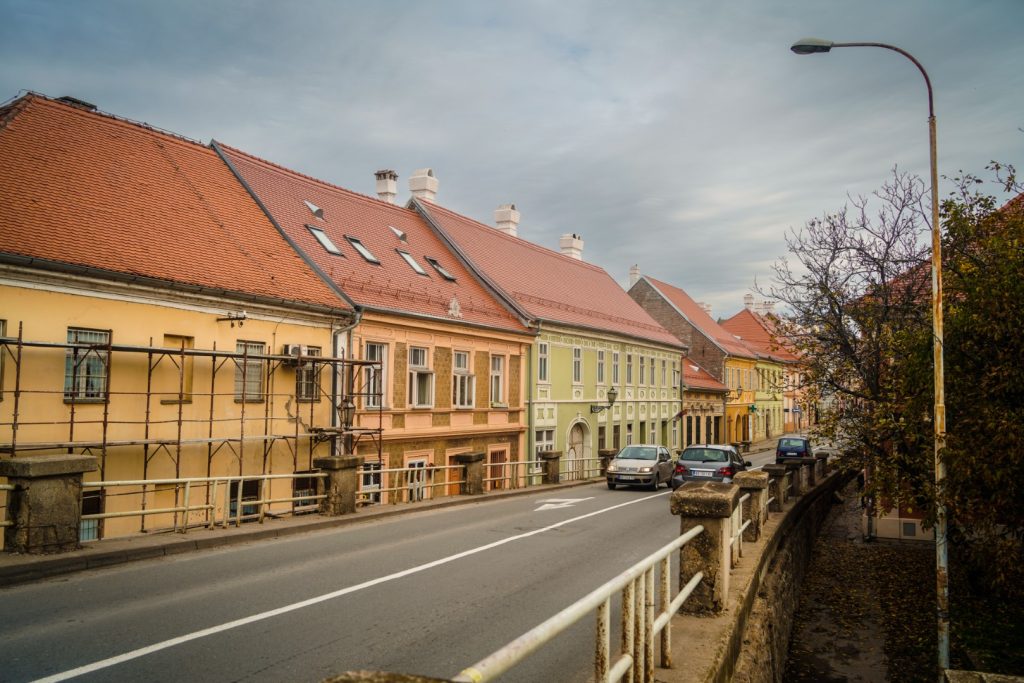
8. Danube Park
Take a break from exploring and enjoy the singing of the birds in the Danube Park, which was beautifully lined with autumnal trees when I visited in October.
If you fancy a quiet place to relax and perhaps enjoy a lunch or feed birds (call me ancient, but I love doing this!), this is the place to go in Novi Sad. Small, but beautiful, and a good place to chill out for a while.
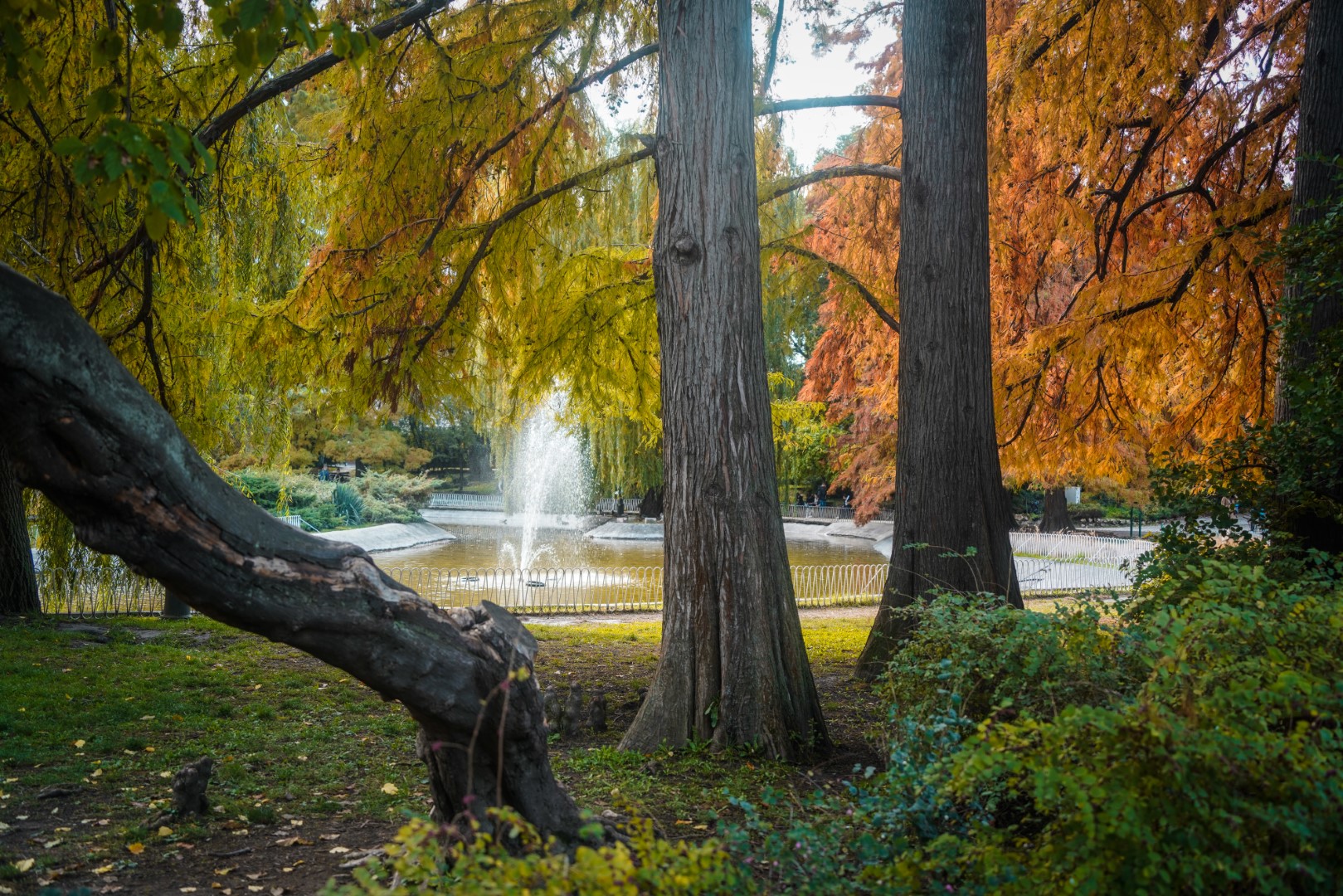
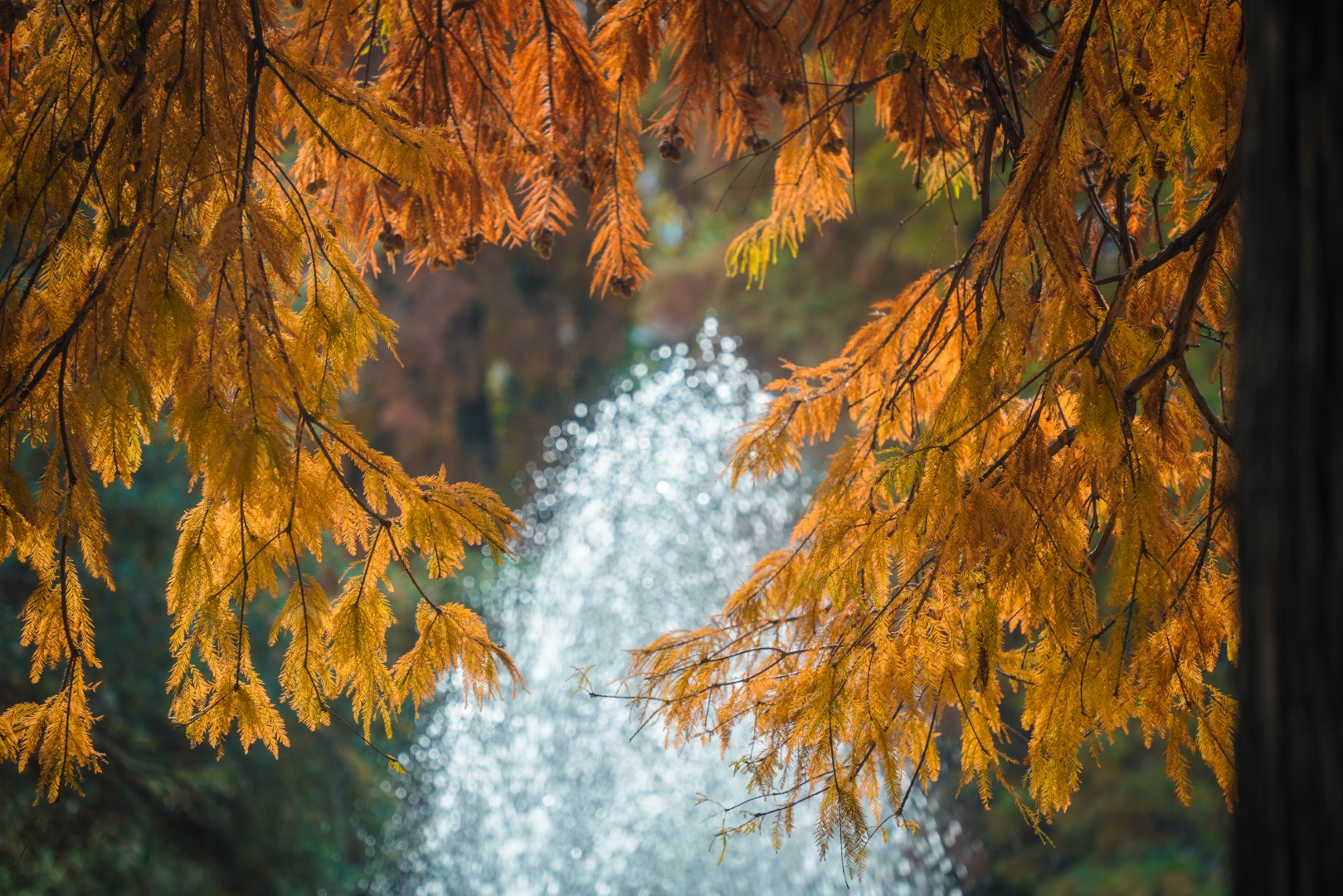
9. The most beautiful H&M in the world?
Y’all know I wouldn’t usually recommend visiting a fast-fashion store, but I will make an exception for the H&M in Novi Sad, located near the main square. Not for the clothes – definitely not – but for the magnificent building its located in. Once the home of a prominent merchant family, the beautiful three-storey building was designed by the famous architect, Joseph Wild, in 1853.
Step inside and be wowed by the gorgeous floor tiles, exquisite carved banisters and the wrought iron grills, and don’t forget to look up at the ceiling by the stairwell which features a beautiful fresco!
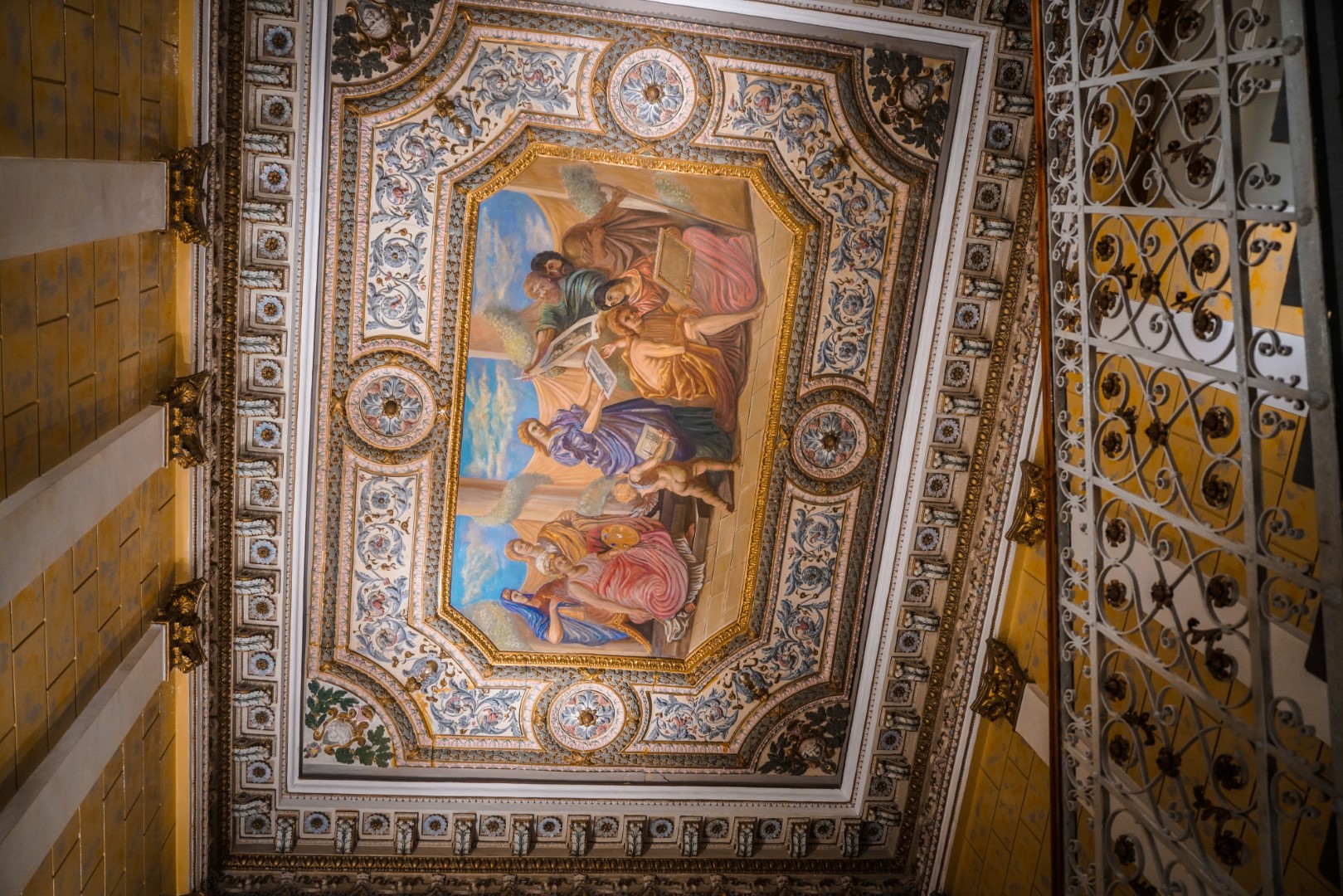
10. Museum of Vojvodina
Learn about the history of Novi Sad and the Vojvodina region at the Museum of Vojvodina. The museum covers local history from Paleolithic times and up until the late 19th century. I’ve visited the museum three times, and although it’s quite small, there’s always something interesting to be found. Bare in mind that hardly anything is in English, but do come here to see the many beautifully preserved prehistoric artifacts.
Even if you’re not into archaeology or history, the museum is worth a visit, if not only to see the exhibition about the three gold-plated Roman helmets from the 4th century AD that were discovered in Berkasovo, approximately eighty kilometres west of Novi Sad. As I write this, the original helmets are exhibited at the museum which is a very rare occasion!
The museum is open from 9 AM to 7 AM on Tuesdays through Fridays, and from 10 AM to 6 PM on Saturdays and Sundays. It’s closed on Mondays. Entry tickets cost 200 RSD, and children under seven years of age can visit for free.

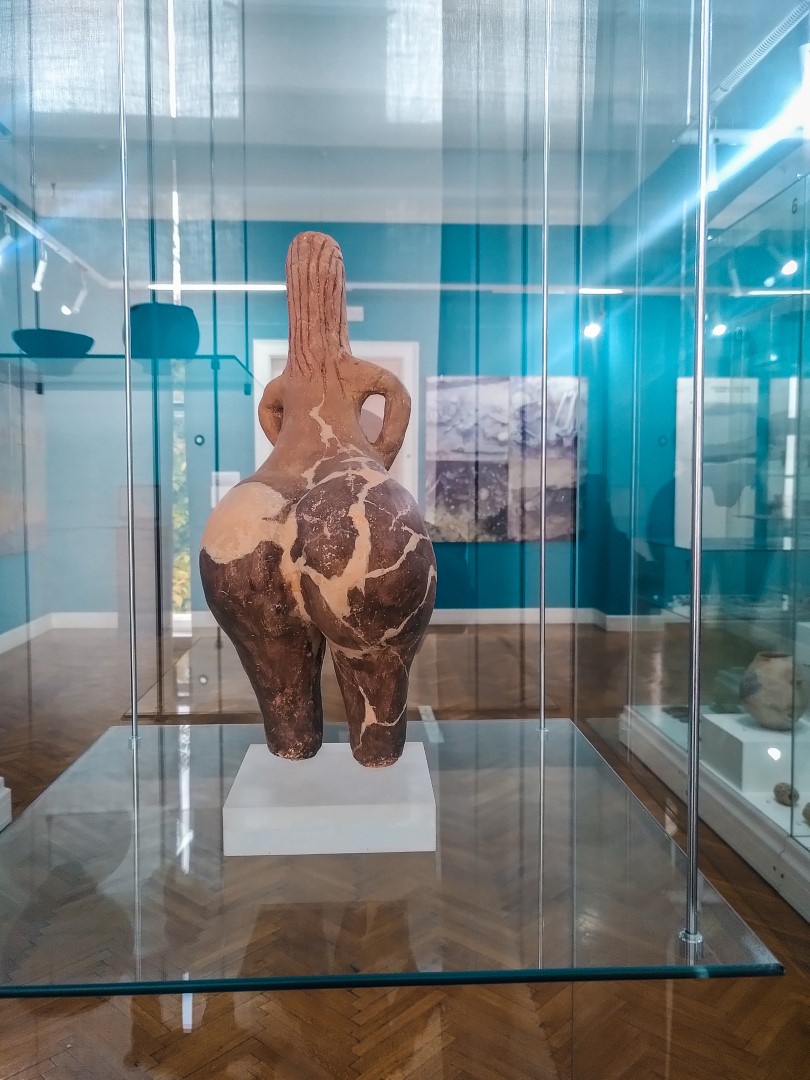
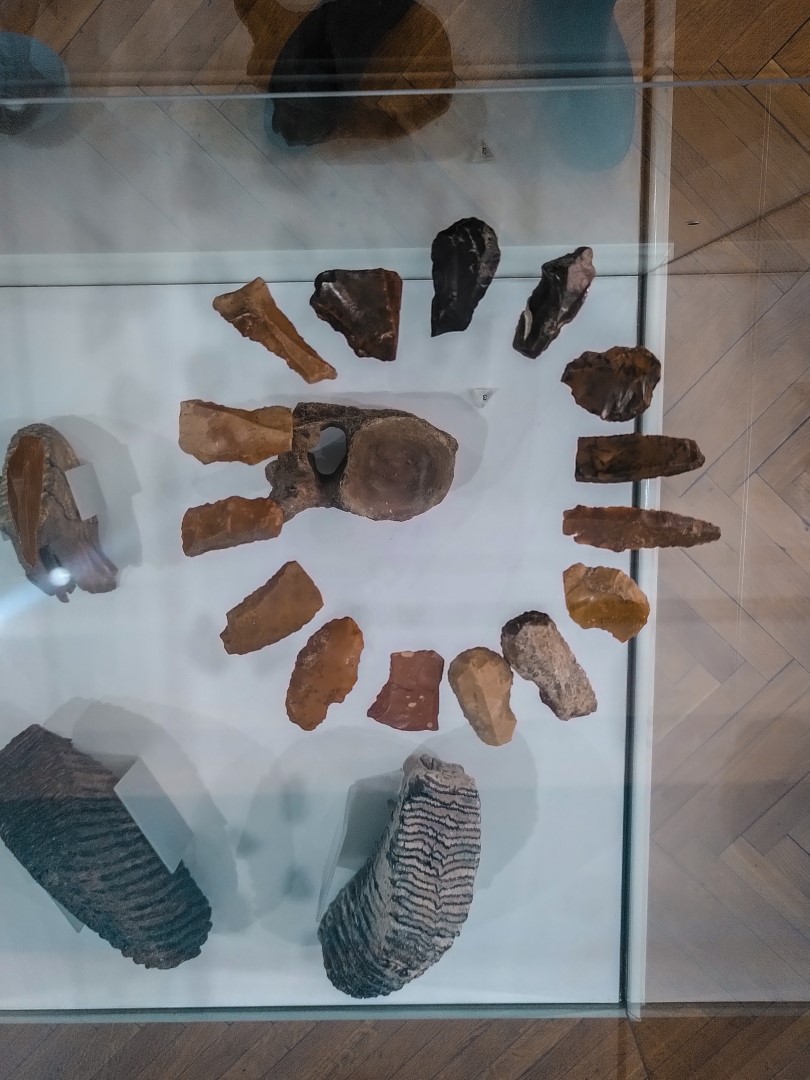
11. Novi Sad Synagogue
The synagogue in Novi Sad is no longer active (in fact, the only active synagogue in Serbia is the one in Belgrade), but it’s still well worth a visit to see its beautiful exterior.
It was built in the early 20th century by the renowned Hungarian architect Lipót Baumhorn who also designed several synagogues in his home country. The architectural style of his designs are a mix of Hungarian Secession and Art Nouveau, including this one in Novi Sad. Although the synagogue is no longer in use, it serves as a beautiful memory of a once thriving Jewish community that now consists of around 400 individuals, having decreased from more than 4,000 people before WW2.

12. Fruška Gora National Park
No trip to Novi Sad is complete without a visit to the nearby Fruška Gora National Park. The ancient mountain stands at 539 metres tall, and is covered by lush trees that looked absolutely dreamy draped in warm autumnal colours.
The best thing to do in the national park is of course to hike! I plotted out a rather random route for myself which I’ve shared in a dedicated blog post, and I advise you to do the same – or to just walk without a destination. Everywhere is beautiful. But there’s one thing that you really should take me up on. Start or end your trip in the village of Beočin – you’ll find the reason why below!
Read more: Fruška Gora National Park: An autumnal hike through ‘the Jewel of Serbia’

13. The abandoned Spitzer Castle in Beočin
In 1941, the wealthy Spitzer family abandoned their castle in the tiny village of Beočin, nestled beneath the Fruška Gora mountain. After a few years of being in various use, it was left to decay, and never claimed by anyone but curious urban explorers like myself – oh yeah, and horror film directors!
Discovering this castle was like a creepy dream come true for me. I had no idea it was even there, and when I stumbled upon it, there was no one else in sight. I spent well over an hour exploring every nook and cranny, snapping picture after picture as I went on. All alone in a huge abandoned mansion. It’s truly unique to have a place this hauntingly beautiful all to yourself, and that’s exactly why I advise you to include it in your trip to the national park!
You can find the castle along the Fruškogorska road shortly after leaving the “centre” of the village behind.
Read more: An abandoned world: The tale of Spitzer Castle, Beočin, Serbia

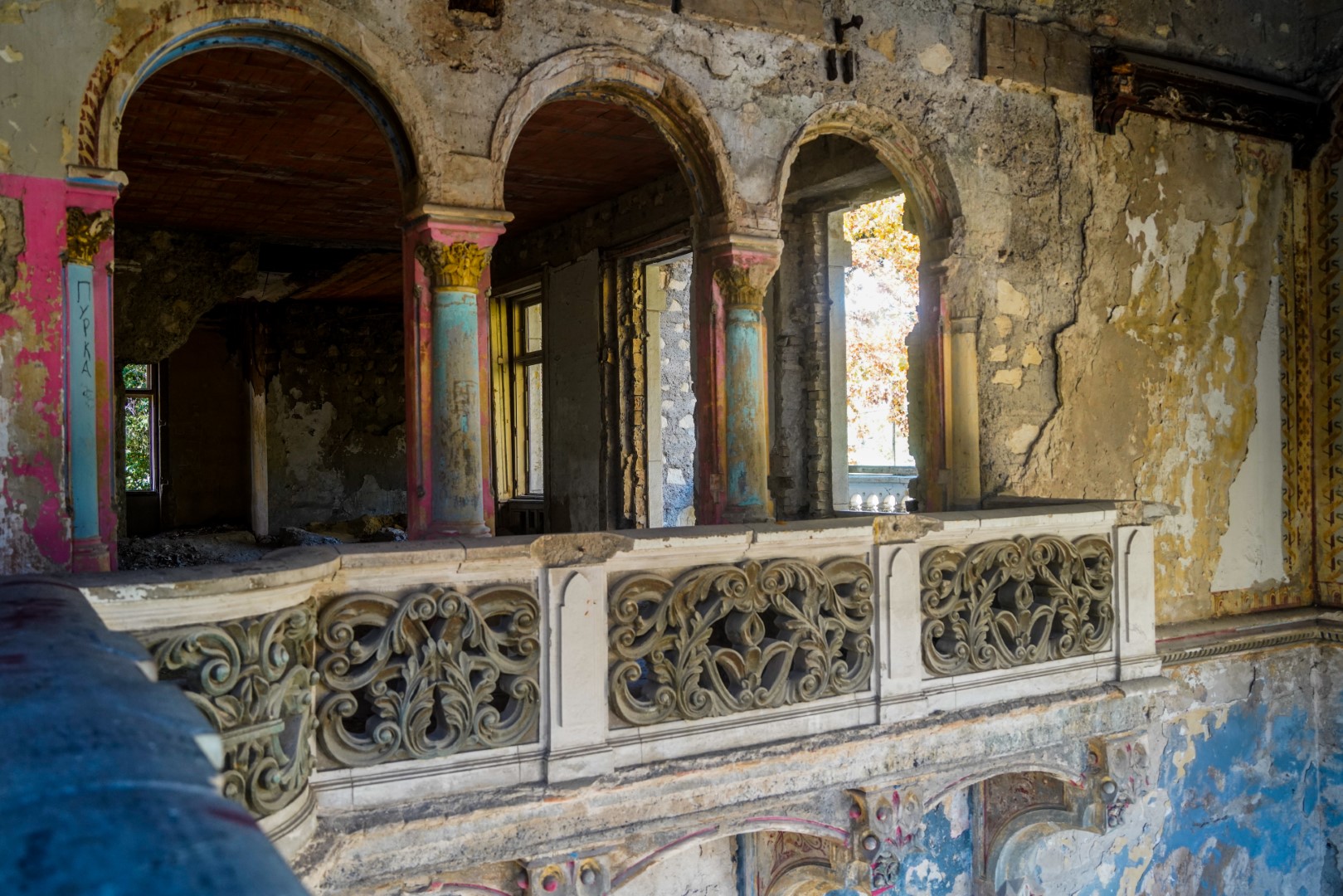

Where to next?
Novi Sad is located between four international borders, making further travels to Croatia, Bosnia and Herzegovina, Romania and Hungary very easy! But the rest of Serbia also has a lot to offer, and I recommend seeing more than just one city in this intriguing country! An obvious choice is Belgrade, Serbia’s bustling capital city, which is just 1,5-hour away by bus from Novi Sad, or you could visit the charming small town of Sremski Karlovci which is a mere eight kilometres from Novi Sad.
The Art Nouveau capital of Serbia, the city of Subotica, is also just 1,5-hour away by bus, and I also really enjoyed the small city of Zrenjanin which is just an hour away. I generally love exploring the northern part of Serbia. The best option for exploring this part of the country is probably to rent a car or try your luck with hitchhiking!
WANT MORE INFO?: Download a city guide for Novi Sad with GPSmyCity here!

Map of the 13 sites to see in and around Novi Sad
Find your way to the 13 sites listed above with this interactive map.
Leave a Comment
Pingback: An abandoned world: The tale of Spitzer Castle, Beočin, Serbia – I Live as I Dream on 27/04/2022
Pingback: Borđoš 2022: A second season of archaeological fieldwork in northern Serbia – Northtrotter on 27/04/2022
Pingback: My worst travel moments of 2021 – Northtrotter on 27/04/2022
Pingback: Subotica: Art Nouveau at the very north of Serbia – Northtrotter on 27/04/2022
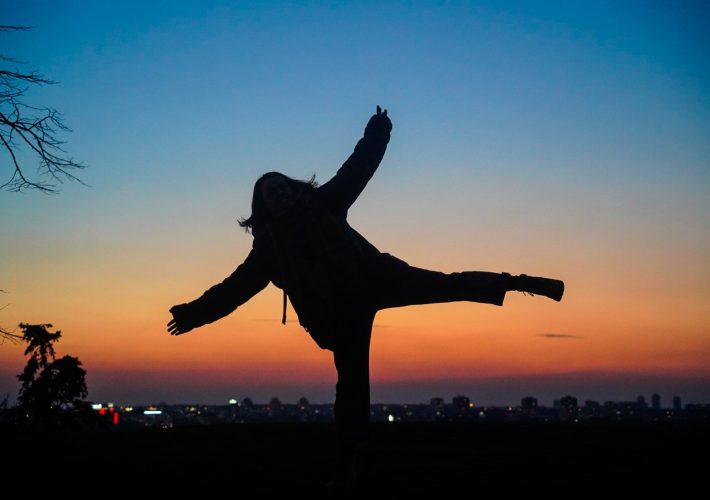
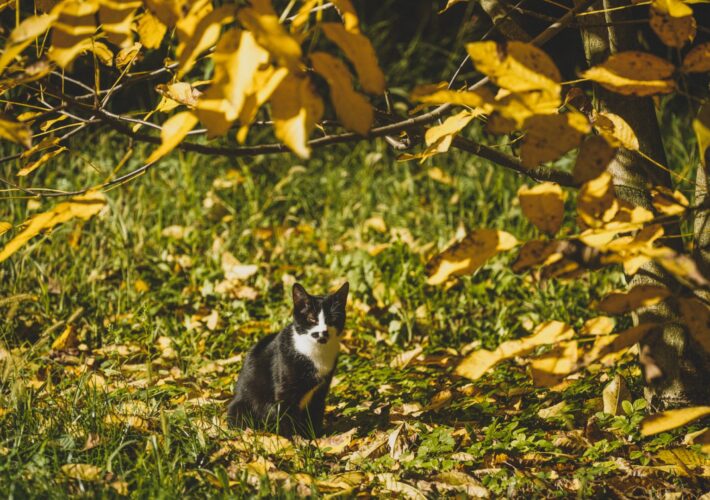
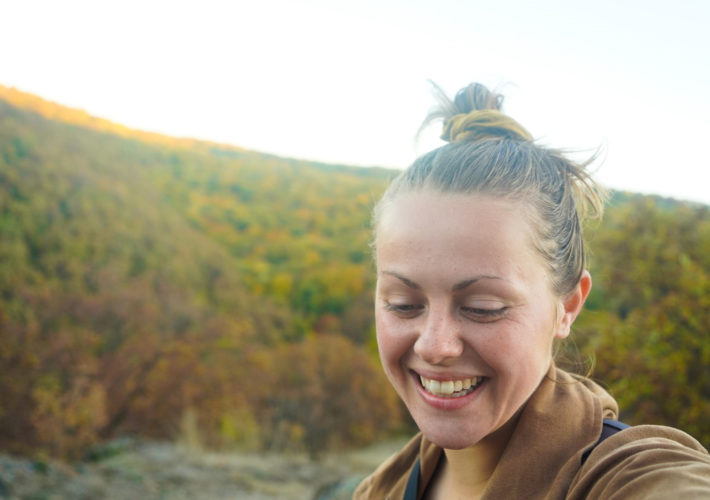

6 COMMENTS
Julia
2 years agoI was looking forward to your Serbia posts! I am considering going to Novi Sad in the Summer! Can’t wait to read more about it in your next articles!
Melissa Cherry Villumsen
2 years agoThank you Julia! This summer is the perfect time to go to Novi Sad! I hope you’ll enjoy it immensely!